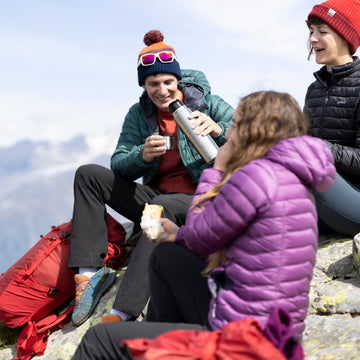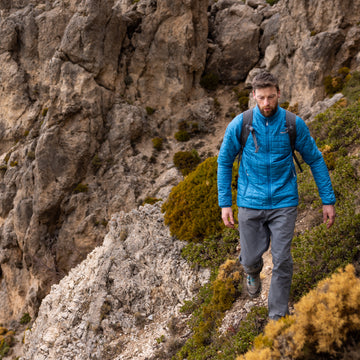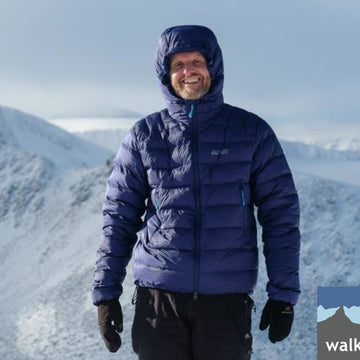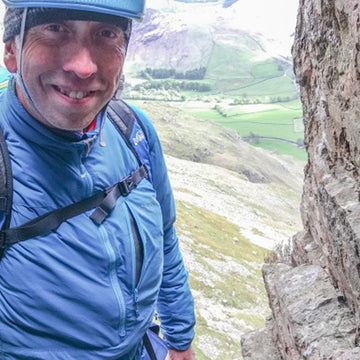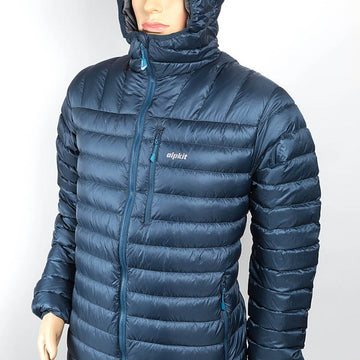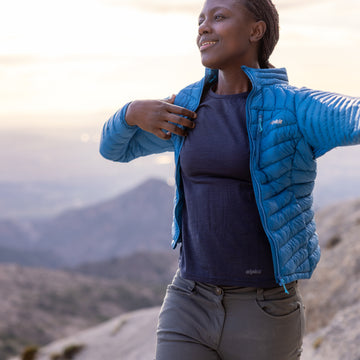
Explore the Scottish hills in winter with the right kit. Discover how to layer up for warmth and weather protection in tough mountain conditions.
The temperatures have dropped. The Scottish Highlands are shrouded under their winter cloak. For some of us, it will be enough to admire it from a distance, but for the rest of us, well, we just can't stop ourselves from getting out to experience it.
In this article, we will explore how you can tune your outdoor clothing to prepare for some of the challenges only the Scottish Winter can serve.
The variability of the Scottishwinter
Despite the moderate heights of the Scottish Highlands (compared to the Alpine ranges), winter in the Scottish mountains presents hillwalkers, climbers, trail runners and cyclists with considerable challenges. The weather can be harsh and unpredictable, with short daylight hours, snowstorms, sleet and icy conditions.

Choosing the right outdoor clothing for the Scottish Winter mountains is essential for maintaining warmth, protection from the elements, and ensuring that sweat and moisture are effectively managed.
Scotland's rapidly changing and often severe winter weather conditions make layering particularly critical, but the rewards of experiencing it at close hand will stay with you for life.
In the heart of Scottish winter, the Highlands rise, Bare and bleak, under icy skies. Snow blankets the craggy peaks so high, While cold winds through the glens do sigh.
5 Tips for dressing well in the Scottish Winter Highlands
Heading out into the winter highlands is a big step up from summer conditions, but the good news is that you probably already have a lot of the basic kit.
Regularly practice and refine your layering system to understand what works best for you
Conditions in the Scottish mountains change quickly, so be ready to adjust your layers as necessary. Nice, dry, fluffy snow can quickly change to cold, wet rain. Your down jacket that works nicely on the summit plateau might not be the best garment as you descend down the mountain.
We have much more on The Benefits of a Layering System.
Protect your extremities
Ice cream headaches, hot aches, frost-bite, toe-nip - if you have spent time climbing or walking in the winter highlands, you will know what these feel like.
Carry spare gloves so when they become damp, you can switch to a dry pair and warm them inside your jacket.
Primaloft over mitts are indispensable in Scottish Winters. Wear them over your climbing gloves for drying or directly for added warmth. Make sure they have an attachment loop so they can be easily attached to a harness when climbing or attached to you when the wind is howling.
Alpkiteer Ian Palmer has some ideas on how you can simply winterise your training kit with a few additional accessories.

A belay jacket is your personal force field
Climbing and walking in snow is a demanding task that generates heat. At some point, you will stop, and your body will cool rapidly. A belay jacket is an oversized insulated jacket designed to be thrown on quickly while you rest. For Scotland's damp winters, opt for synthetic-filled jackets over down. They retain warmth even when wet. Choose one that fits over your other layers, has large pockets for gloves, a glove-friendly zipper and a hood that fits over a helmet.
Keep spare capacity in your pack
It is cold and dark as you gingerly leave the comfort of your nice, warm car. You are wearing all your layers just to stay warm and dry. Eventually, you break through the dreich, and it turns to snow. As the morning progresses, the clouds part and the sun beats down on your sweaty brow. You slide off your sleek, alpine-style pack. Finally, you can strip back your layers. But wait, in your eagerness to emulate your alpine poster heroes, there is nowhere to hang your coat, over-trousers and gloves.
Keep an open mind, consider fibre pile
Fibre pile jackets occupy a polarised space amongst hillwalkers and climbers. However, if there is one place you should give them a go, it is in damp and wet conditions like those often found in the Scottish mountains.
Mens Jura Mountain Smock | Womens Jura Mountain Smock
Fibre pile jackets are not waterproof (that's the first thing that puts people off); however, they are highly breathable, warm, windproof, dry quickly, and optimal for temperatures below freezing. For maximum performance, they should be worn directly against the skin without thermal underwear (this is the second thing that puts people off). Wearing thermals can cause overheating, reduce wicking capability, and decrease performance in rain compared to the jacket's natural fibre pile.
If you can get over those conceptual leaps, you will join the ranks of mountain rescue teams, professional mountain guides and climbers who live in nothing else all year round.
What to wear for a trip into Scotlands Winter Mountains
Here are three off-the-peg strategies curated for a Scottish winter mountain day. Feel free to mix and match. Like a snowflake, no two winter adventures are the same.

The Gnarly One
Maximum protection from bad weather whilst you teeter along knife-edge ridges or plough up icy gullies.
Winter Baselayer, Midlayer, Insulation and Shell
- Laika baselayer Mens | Womens
- Griffon Hoody midlayer Mens | Womens
- Katabatic Insulated jacket Mens | Womens
- Definition Shell Jacket Mens | Womens
- 0Hiro (In your pack) Mens | Womens
Winter Trousers and Over Trousers
- Kepler Long Johns Mens | Womens
- Ardent softshell trousers Mens | Womens
- Nautilus over trousers Mens | Womens
Winter Socks, Gloves, Gaiters and Hats
The Mountain Hare - fast and light
Mountain clothing for active but slightly less committing outings into the winter highlands.
Winter Baselayer, Midlayer, Insulation and Shell
- Aztec Longsleeve baselayer Mens | Womens
- Griffon half-zip midlayer Mens | Womens
- Yakutian fleece Mens | Womens
- Balance waterproof Jacket Mens | Womens
Winter Trousers and Over Trousers
- Kepler Merino Long Johns Mens | Womens
- Chilcoot softshell trousers Mens | Womens & Parallax waterproof trousers Mens | Womens or Equinox over-trousers Mens | Womens
Winter Socks, Gloves, Gaiters and Hats
The Natural One
Our all-natural fibre solution to staying warm and active hillwalking in winter.
Winter Baselayer, Midlayer, Insulation and Shell
- Kepler Merino Long Sleeve Mens | Womens
- Milford merino heavyweight baselayer Mens
- Brenin Wool Jumper Mens | Womens
- Ranger Ventile Jacket Mens | Womens
Winter Trousers and Over Trousers
Winter Socks, Gloves, Gaiters and Hats
- Idwal Beanie
- Merino Liner Gloves
- Mica Gloves
What are you planning for this Scottish Winter?
Whether sharpening your axes to climb grade 5 icefalls, pulling on crampons to bag some winter Munros, staying up to stargaze or celebrating Hogmanay, we hope you stay warm and safe.
- Winter Mountaineering and Climbing: The Scottish Highlands offer some of the UK's best winter climbing and mountaineering opportunities. Climbers and mountaineers are drawn to the challenges and beauty of snow-covered ridges, gullies, and ice climbs. Scotland has a rich history of pushing mountaineering standards that mesmerises us. The sands of time have done little to change their challenges.
- Walking and Hiking: Popular locations such as Ben Nevis, Cairngorms, and Glen Coe become transformed under a blanket of snow, offering hikers an even more committing experience than in the summer months.
- Skiing and Snowboarding: The Scottish Highlands host several ski centres, including those in the Cairngorms and Nevis Range. While conditions can be variable, on a good day, skiing, snowboarding, or ski mountaineering with a view of the Scottish peaks and lochs is a dream many of us wish to see.
- Solitude and Tranquility: The winter months often mean fewer tourists, leading to a more peaceful and solitary experience for those venturing into the landscape.
- Winter Photography: The winter landscape of the Highlands, with its snow-capped peaks, frozen lochs, and ethereal light, presents unparalleled photography opportunities. The contrast of white snow, dark rock, and often dramatic skies creates striking images. While some animals hibernate or migrate during winter, many remain active. Deer, golden eagles, mountain hares in their white winter coats, and ptarmigans are some of a winter photographer's hit list favourites.
- Aurora Borealis: You will need a clear sky to witness this magic, but if anything can top a full day in the Scottish Highlands, it will be a view of the Northern Lights. Wrap up warm.
Winter mountain safety
The Scottish winter mountains are beautiful but have a bite when conditions turn. Stay safe and check the forecast before you head out with service such as the Scottish Avalanche Service.
The layering system for hillwaking - how to stay warm and dry all year around.
The tried and tested layering system for hillwalking consists of several layers designed to work together.
-
Baselayer - This is your next-to-skin layer. Baselayers help move sweat away from your skin faster, improving your comfort by reducing that clammy feeling. In warm conditions, you may wear a base layer directly underneath your waterproof. A base layer may have short or long sleeves.
More about baselayers for hillwalking.
-
Midlayer - Worn over your baselayer for warmth and comfort. The ideal mid-layer will be as breathable as possible so it is not a bottleneck in the path of moisture being transported from your skin to the outer surface. Your mid layer becomes an outer layer when the clouds part.
More about choosing a midlayer for hillwalking.
-
Insulation - In the coldest months, an insulated jacket can be worn over your mid layer and under your shell. Either natural down or synthetic insulation it is important that it packs down small for when you are not wearing it. In fine, dry, cold weather it is common to wear your insulated jacket as your outer layer.
More about choosing an insulated jacket for hillwalking.
-
Breathable waterproofs - Stops the rain coming from the outside to the inside while letting moisture move from the inside to the outside.
More about choosing a waterproof for hillwalking.
Find out more about how we design and think about layering systems for hillwalking.



![Filoment Vest [Womens]](http://alpkit.com/cdn/shop/files/womens-filoment-vest-2024-celestial-COLOUR-CHANGE.jpg?v=1732661095&width=768)
![Filoment Vest [Womens]](http://alpkit.com/cdn/shop/files/Filoment-Vest_AW24_Womens_Chamonix_3908_1.jpg?v=1762190565&width=768)

![Filoment Hoody [Mens]](http://alpkit.com/cdn/shop/files/AW25-Chamonix-JW-5042_2.jpg?v=1764948177&width=768)
![Filoment Hoody [Womens]](http://alpkit.com/cdn/shop/files/womens-filoment-2024-celestial-COLOUR-CHANGE.jpg?v=1762183751&width=768)
![Filoment Hoody [Womens]](http://alpkit.com/cdn/shop/files/Camping-Arran-9548_1.jpg?v=1762190561&width=768)

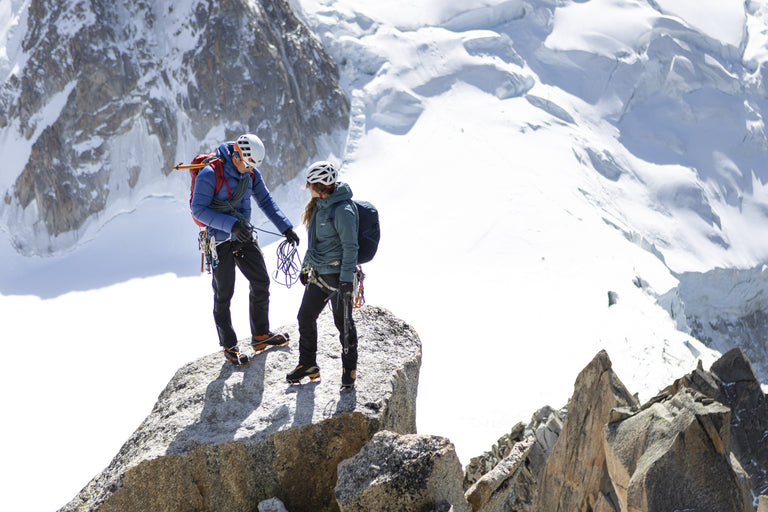
![Fantom [Womens]](http://alpkit.com/cdn/shop/files/womens-fantom-2025-lego.jpg?v=1761315471&width=768)
![Fantom [Womens]](http://alpkit.com/cdn/shop/files/AW25-Chamonix-JW-6769_1.jpg?v=1764162276&width=768)

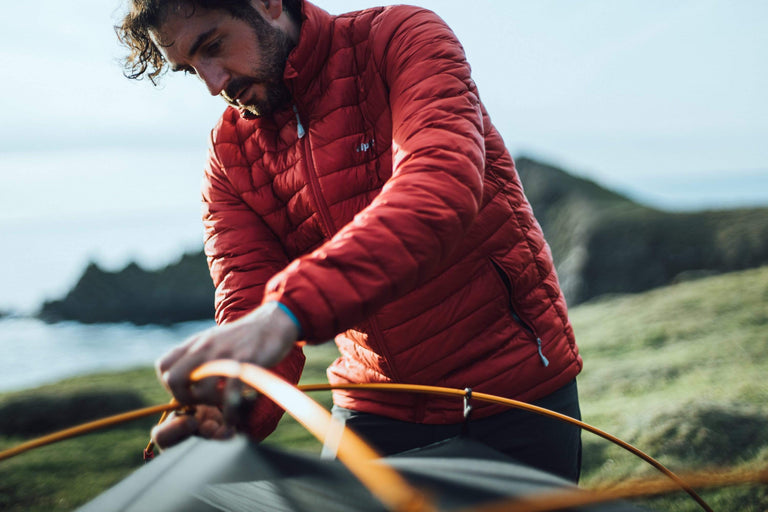
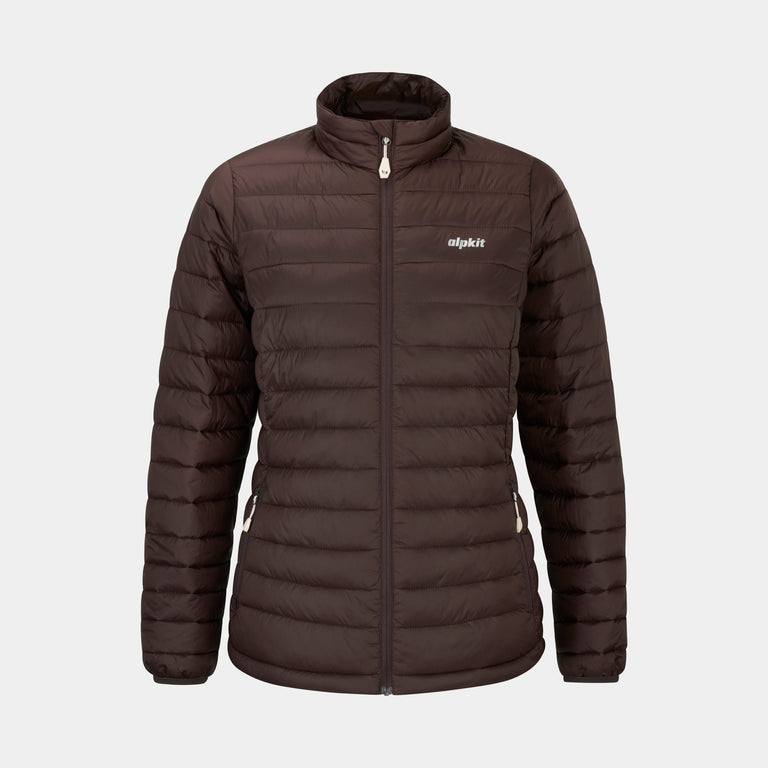
![Talini [Womens]](http://alpkit.com/cdn/shop/files/talini-1.jpg?v=1761823381&width=768)

![Heiko [Mens]](http://alpkit.com/cdn/shop/files/Heiko-Men-Location-1.jpg?v=1764163055&width=768)
![Heiko [Womens]](http://alpkit.com/cdn/shop/files/heiko-womens-2025-cosmos.jpg?v=1759943580&width=768)
![Heiko [Womens]](http://alpkit.com/cdn/shop/files/Heiko-Location-2.jpg?v=1765360327&width=768)
![Jura Mountain Smock [Womens]](http://alpkit.com/cdn/shop/files/jura-womens-2025-alder_d06073cb-b198-4e64-8c67-594b1ed0069e.jpg?v=1762186178&width=768)
![Jura Mountain Smock [Womens]](http://alpkit.com/cdn/shop/files/Alpkit-Winter-Swim-91_1__1.jpg?v=1762190567&width=768)
![Jura Mountain Smock [Mens]](http://alpkit.com/cdn/shop/files/jura-mens-2025-alder.jpg?v=1759922692&width=768)
![Jura Mountain Smock [Mens]](http://alpkit.com/cdn/shop/files/jura-mens-2025-alder-1.jpg?v=1765361100&width=768)
